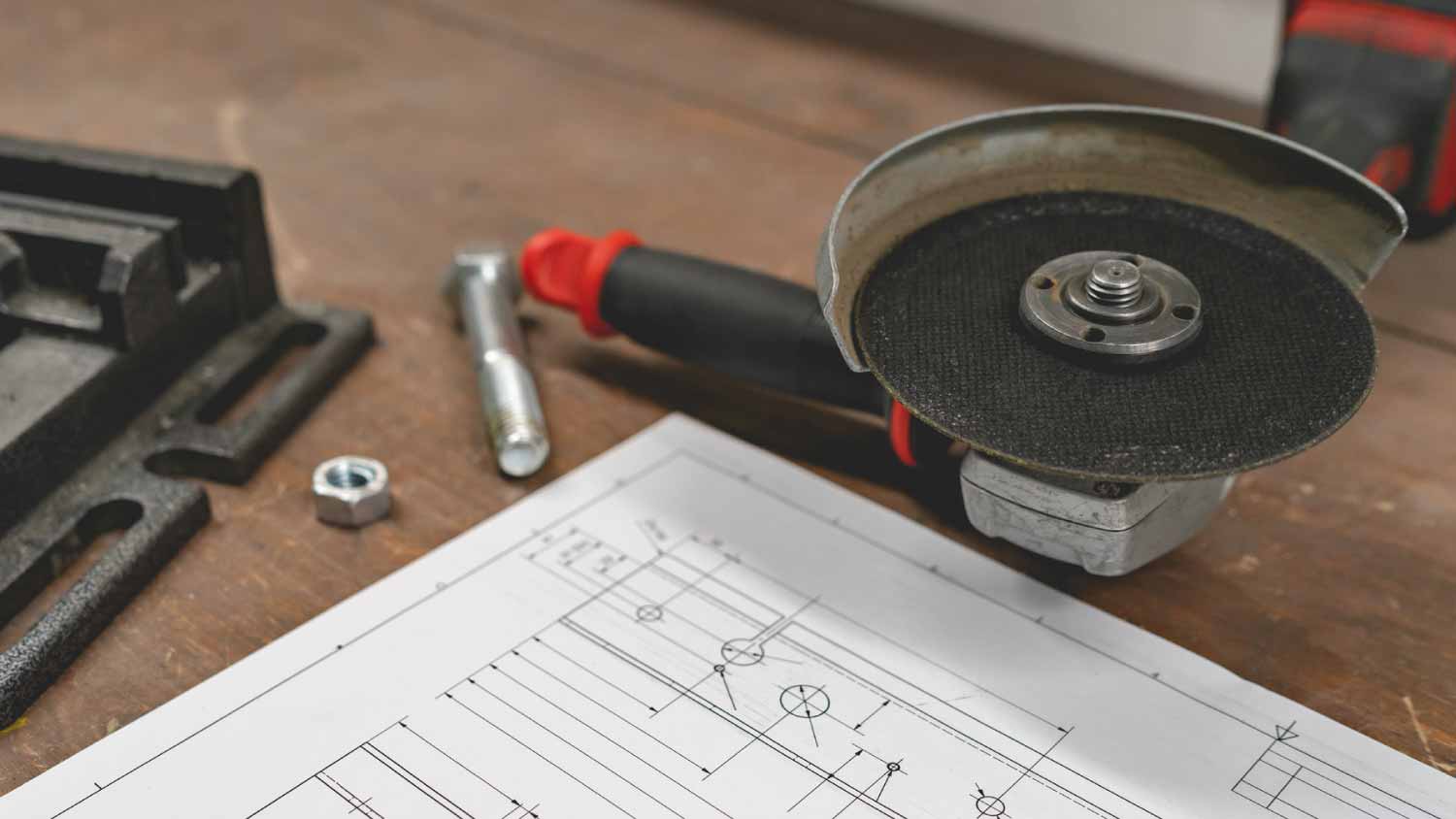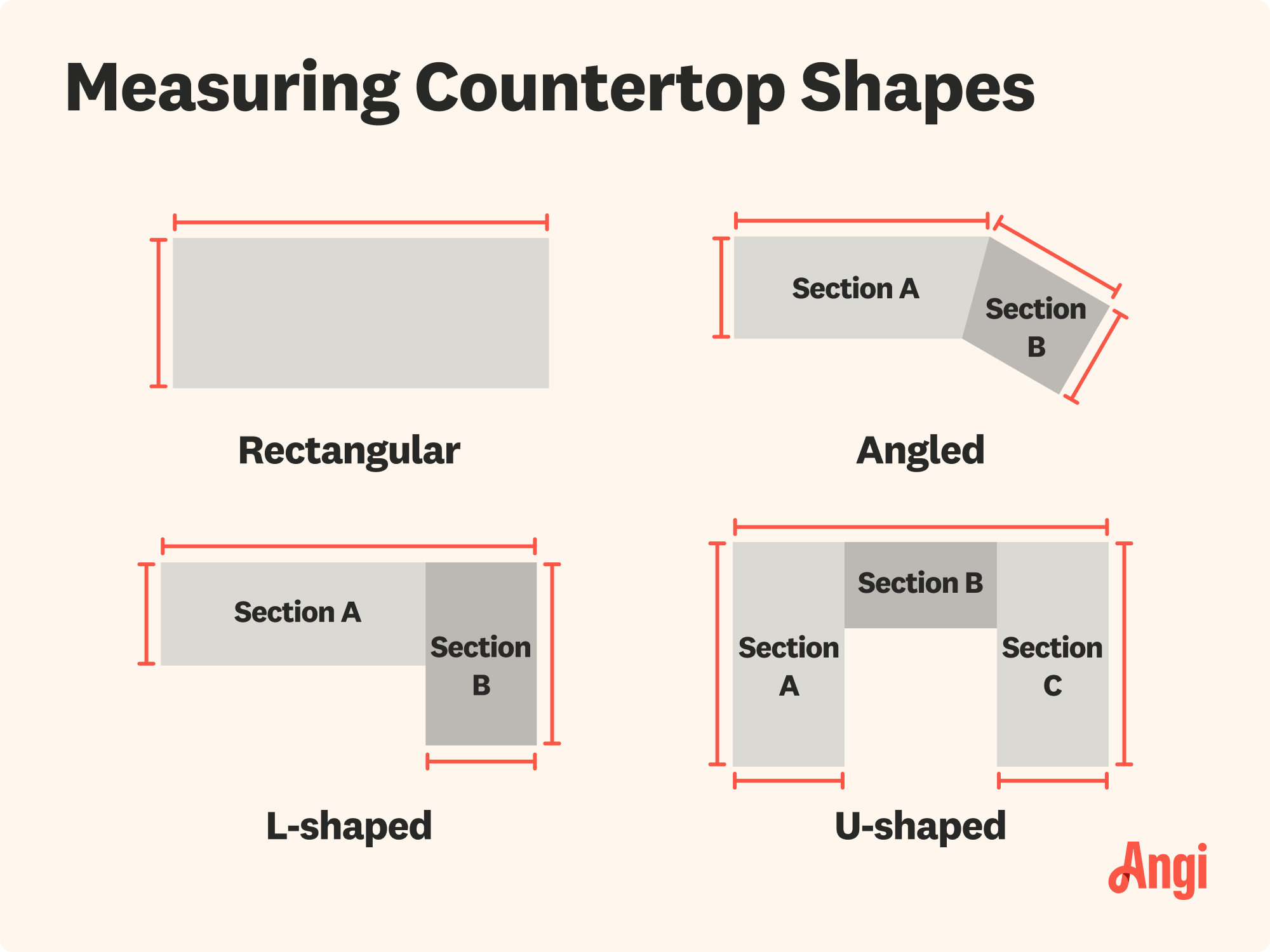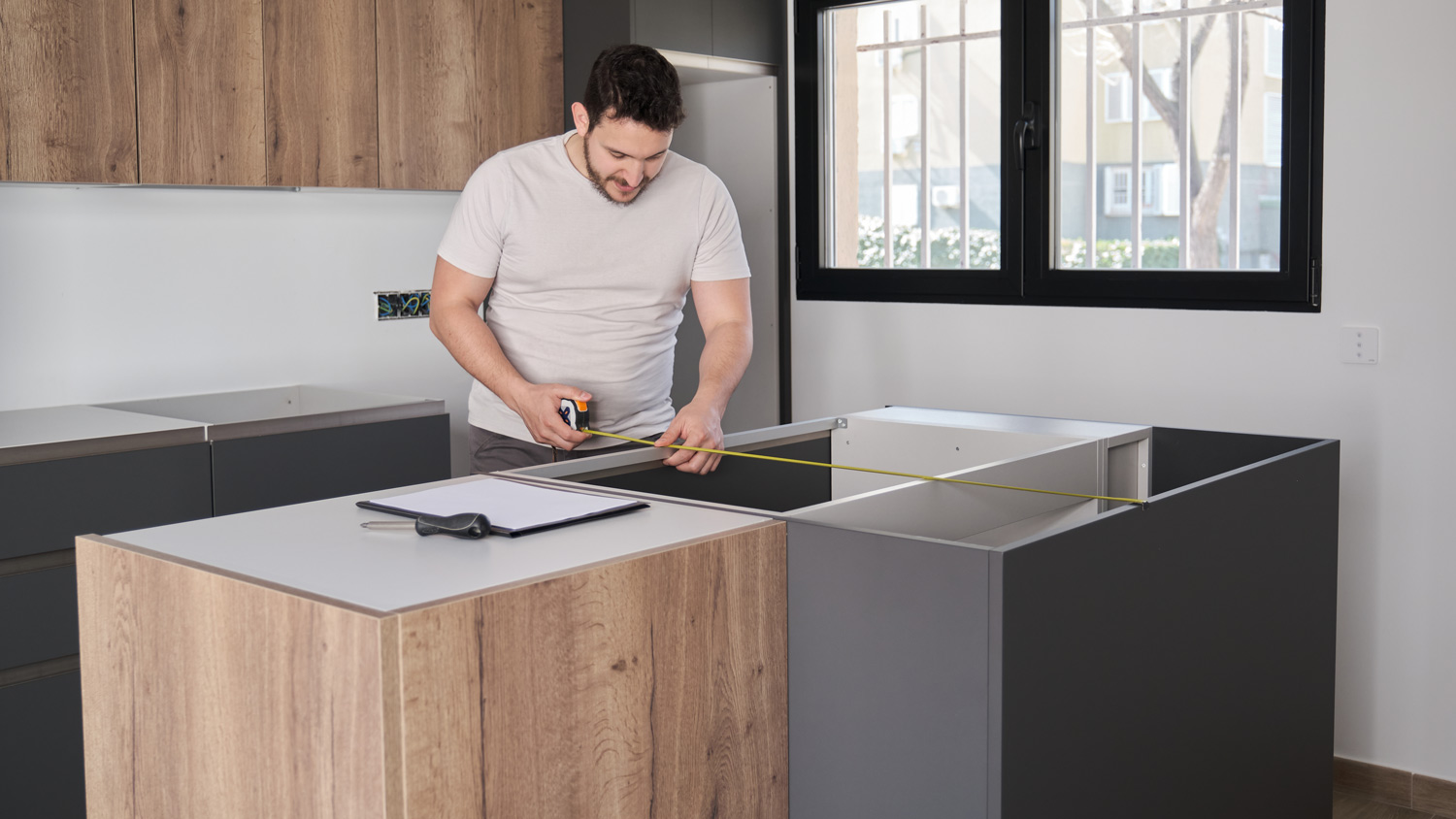
Kitchen islands are multipurpose workhorses in your kitchen. When looking to add one to your home, you should consider its size, materials, and its primary use in your home. Learn about the price of kitchen islands and their different features.
Measure twice, order once


Installing new countertops is a terrific way to renovate your kitchen and tie the whole house together. However, a minor miscalculation in the planning phase can lead to issues from unsightly, mismatched slabs to a complete—and expensive—reorder. To avoid a future headache, it’s essential to accurately measure your countertops before purchasing the material you want. Follow these six steps for how to measure kitchen countertops to ensure precise, hassle-free installation and stunning results perfectly suited for your kitchen.

Before breaking out the tape measure, grab a pencil and a piece of paper (we recommend using graph paper) and draw a diagram of your kitchen countertop. Even a rough sketch is extremely useful for gathering clear and precise measurements, and it helps fabricators visualize the size and layout of your countertops before cutting the slabs. In your diagram, include the location of appliances like the sink and stovetop, as well as any unique features like rounded edges or bump-outs. You’ll add the measurements to the diagram as you go.

Kitchen countertops come in various shapes, ranging from simple rectangles to custom-built, one-of-a-kind pieces. If your countertop can be split into discrete sections—for example, the two sections of an L-shaped countertop—mark them on your diagram. This makes it easier to find the total area of your countertop and gives your local countertop contractor a better sense of where to align the seams of the slabs upon installation.

Now it’s time for the tape measure. Start by measuring the length of your countertops, including the lengths of each individual section as mentioned above, and then write the figure on your diagram. If your counters are long or if one end is flush against a wall, it might help to have someone hold the other end of the measuring tape.
If you’re revamping existing countertops, measure to the edge of the overhang, not just where the base stops. The average countertop overhang adds 1 to 1½ inches, which makes a significant difference. This step is also helpful when figuring out the length of your kitchen backsplash.
Next, measure the width or depth of your countertops. Write the measurements on your diagram as you go along. Kitchen counters vary more in length than depth, with the average depth being around 25.5 inches, but it’s always worth finding the exact figure.
Unless your kitchen countertop is a perfect rectangle, you likely measured it in various sections. If so, add each section’s length and width. For example, if one section of your countertop is 40 inches long and another section is 20 inches long, the total length is 60 inches.
Finally, multiply the length and width to find the total area of your countertops. Most kitchen countertops are around 30 square feet, but it varies widely, especially if you have a kitchen island. Even though countertops are sold in linear feet, knowing the square footage is still helpful when budgeting for materials, planning with your contractor, and ordering from the manufacturer.
During kitchen remodels, countertops and cabinets are the most frequently updated features. According to the responses of 206,600 Angi customers, 23.9% of homeowners requested countertops to be moved or installed, while 22.8% made the same request for cabinets. This indicates that updating these key elements is a common priority for homeowners seeking to enhance both the style and functionality of their kitchens.
From average costs to expert advice, get all the answers you need to get your job done.

Kitchen islands are multipurpose workhorses in your kitchen. When looking to add one to your home, you should consider its size, materials, and its primary use in your home. Learn about the price of kitchen islands and their different features.

Granite counters are durable and stylish, but if you’re wondering how much granite countertops cost, it’s time to dig into the details.

If you’re looking to refinish your countertops, epoxy will make them shine for years to come. This guide will help you budget for epoxy countertop costs.

When it’s time for new countertops, this calculator will help you know how much countertop you need to complete your project.

How much does granite weigh? Estimate the weight of granite countertops for any size and thickness with our quick and accurate calculator tool.

A kitchen countertop can provide extra space to sit, eat, and socialize. This guide explains how much countertop overhang is needed for seating.